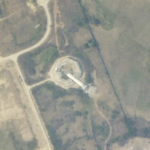
News Highlights
- Delhi’s Air Quality Index (AQI) has surpassed 400, entering the ‘Severe’ category, with smog blanketing the city.
- Families are fleeing to cleaner regions like Kashmir and Uttarakhand, as schools and offices go fully remote.
- Residents criticize the authorities for failing to ensure clean air, warning of a potential mass exodus if the crisis persists.
How Bad is the Air Quality Crisis?
Imagine living in a city where every breath feels harmful. With an AQI of 497 recorded in Delhi, the air is dangerously toxic. Residents, unable to bear the health risks, are escaping to places with significantly cleaner air. For instance, the AQI in Srinagar is only 53, providing a stark contrast to Delhi’s hazardous levels.
Even short trips to nearby towns, like Champawat in Uttarakhand, where AQI levels hover around 80, offer relief. People are prioritizing their health, moving to cleaner areas to escape allergies, breathing issues, and other pollution-induced ailments. The crisis has disrupted daily life, turning schools, universities, and workplaces into remote hubs while pushing families to seek refuge elsewhere.
Will the Exodus Grow?
Delhi’s residents are voicing frustration at the authorities’ inability to tackle the air pollution crisis. Some fear that this trend of leaving the city could escalate if no substantial action is taken. Will this situation lead to a larger exodus in the future, where more people abandon the capital in search of healthier living conditions?
Conclusion: A Call for Action
Delhi’s air pollution crisis paints a dire picture of urban environmental challenges. The increasing AQI levels demand immediate intervention from authorities to provide sustainable solutions. If left unchecked, this could not only impact the health of residents but also reshape the city’s demographics as people prioritize clean air over convenience. Clean air is a basic right, and Delhi’s battle against pollution is a fight for its citizens’ survival.




































Leave a Reply